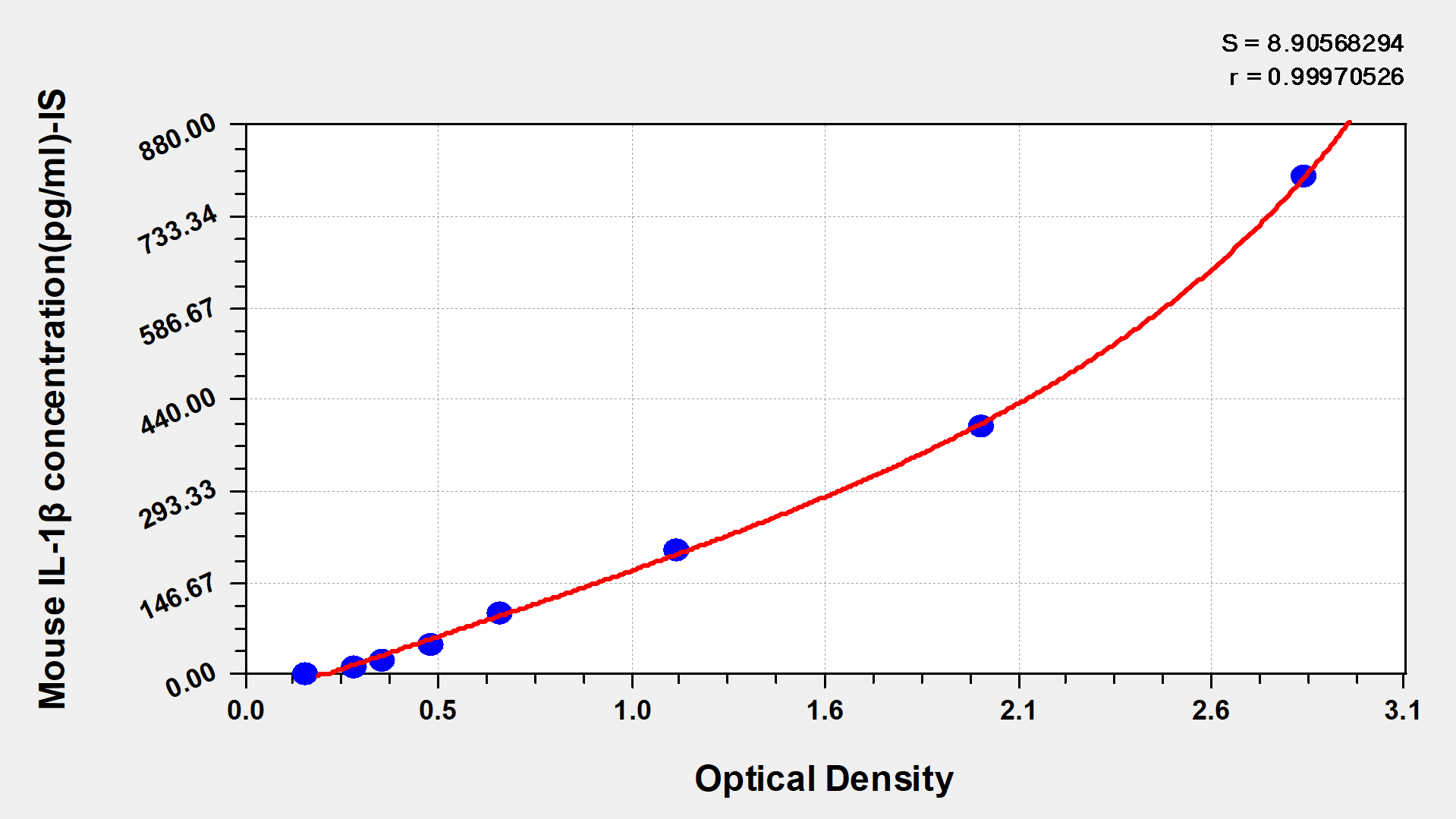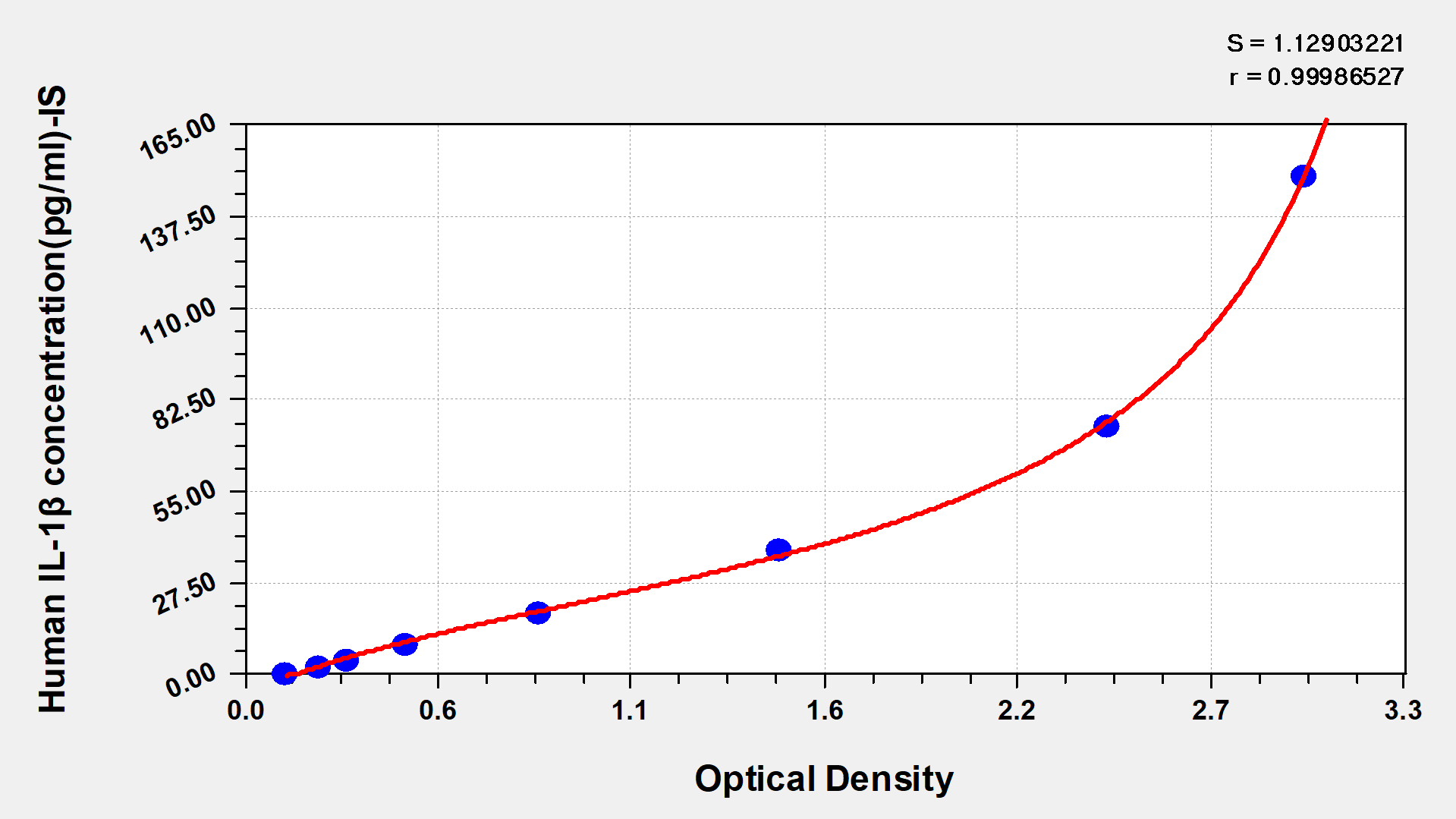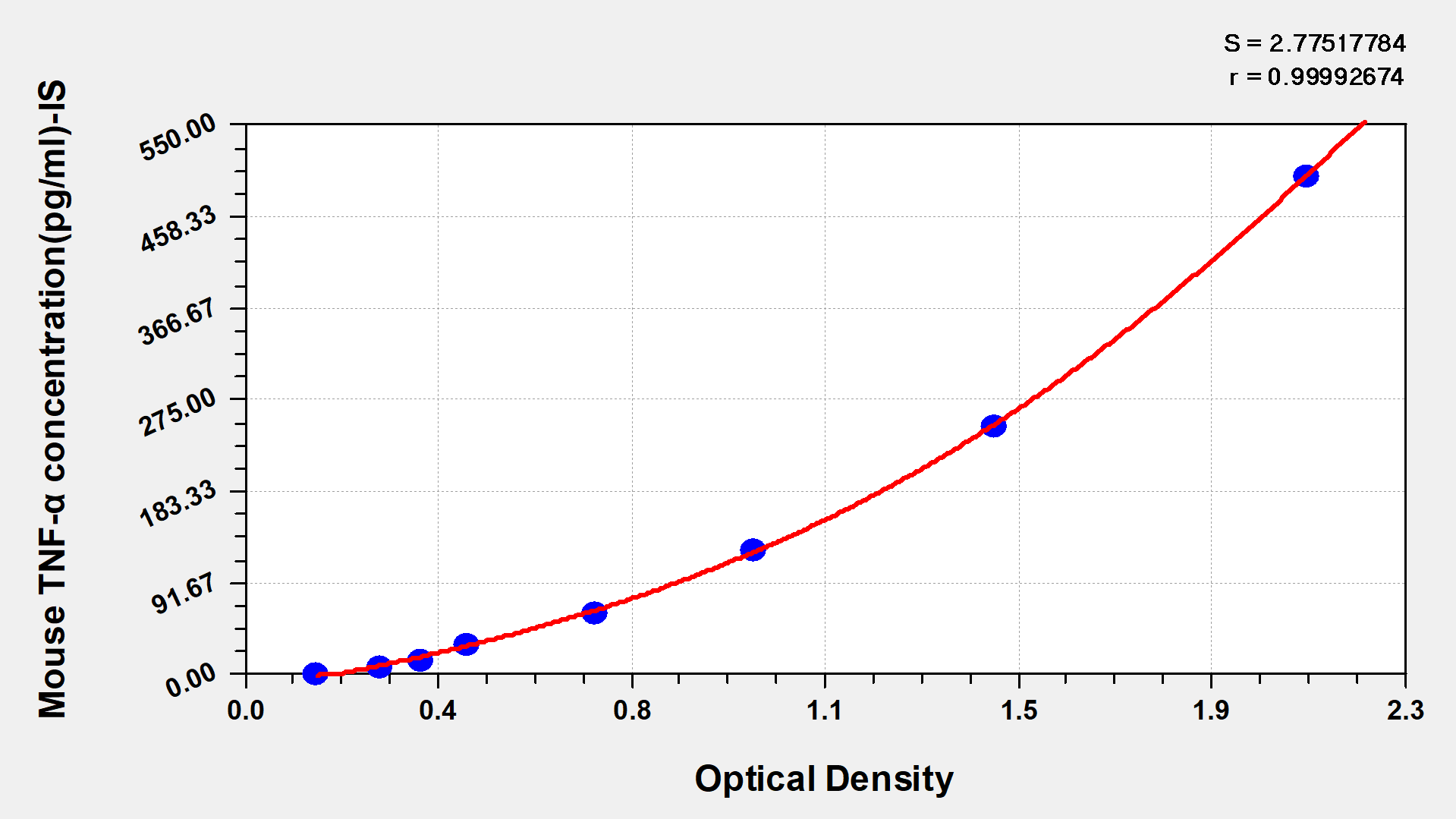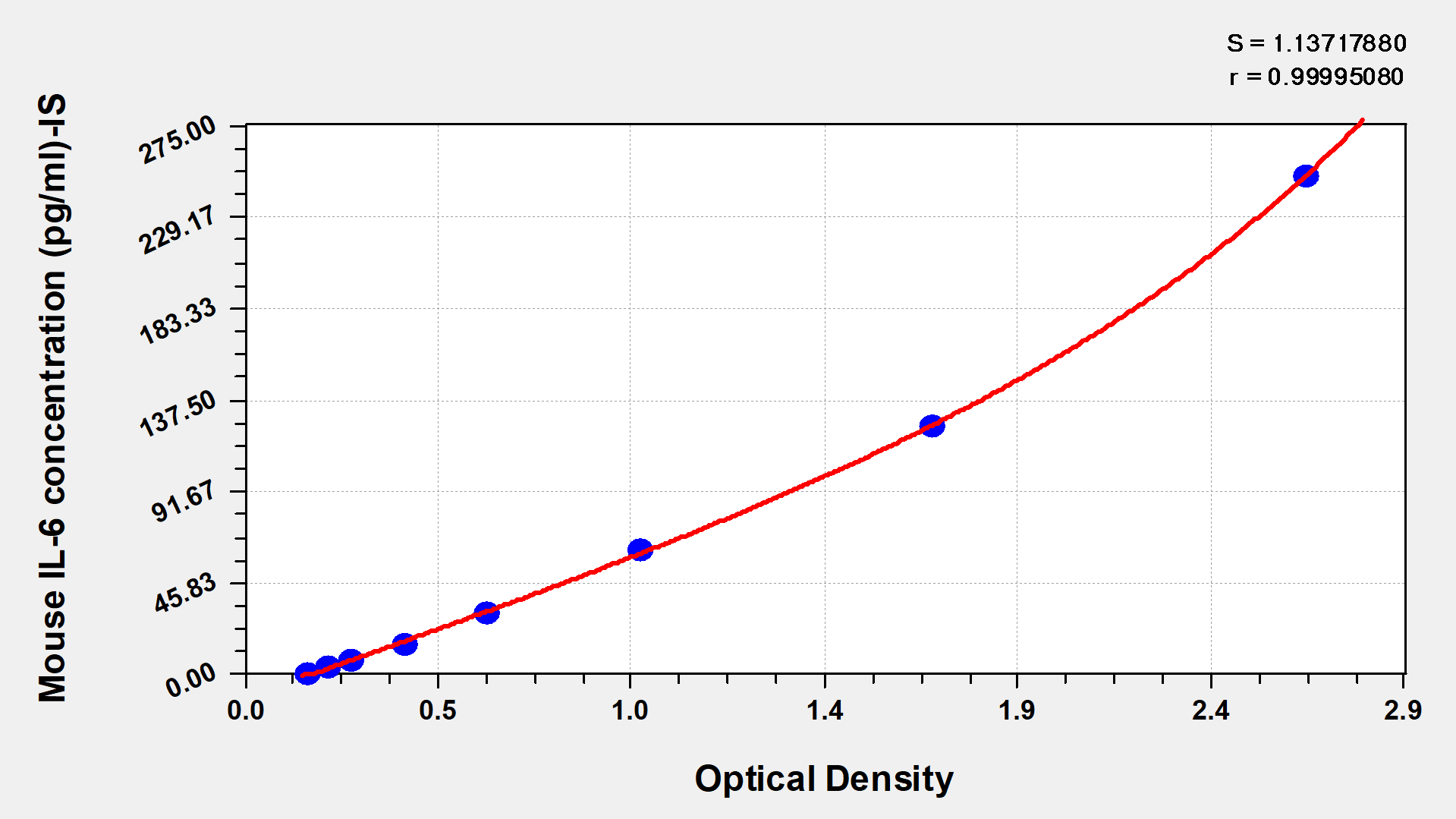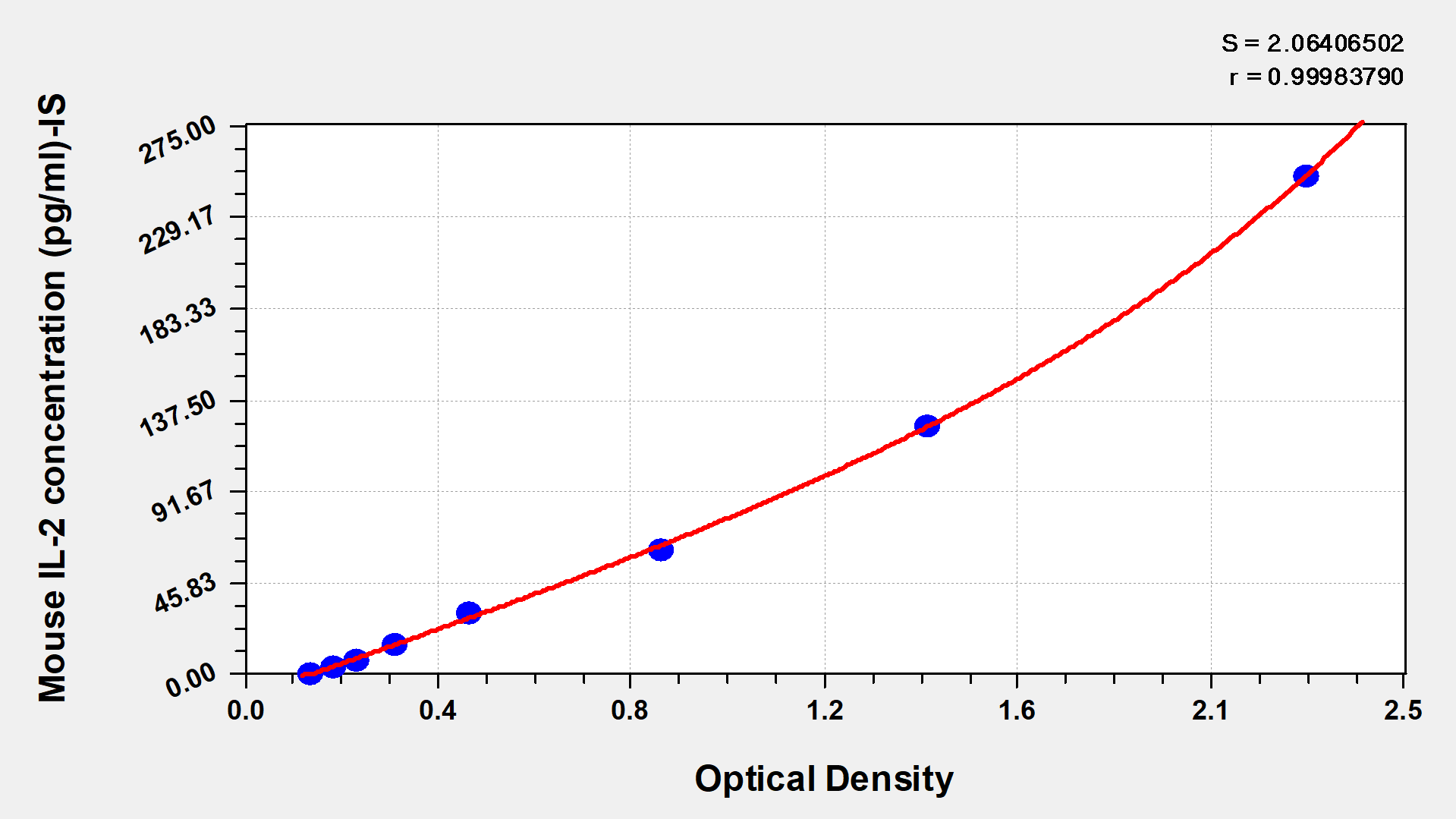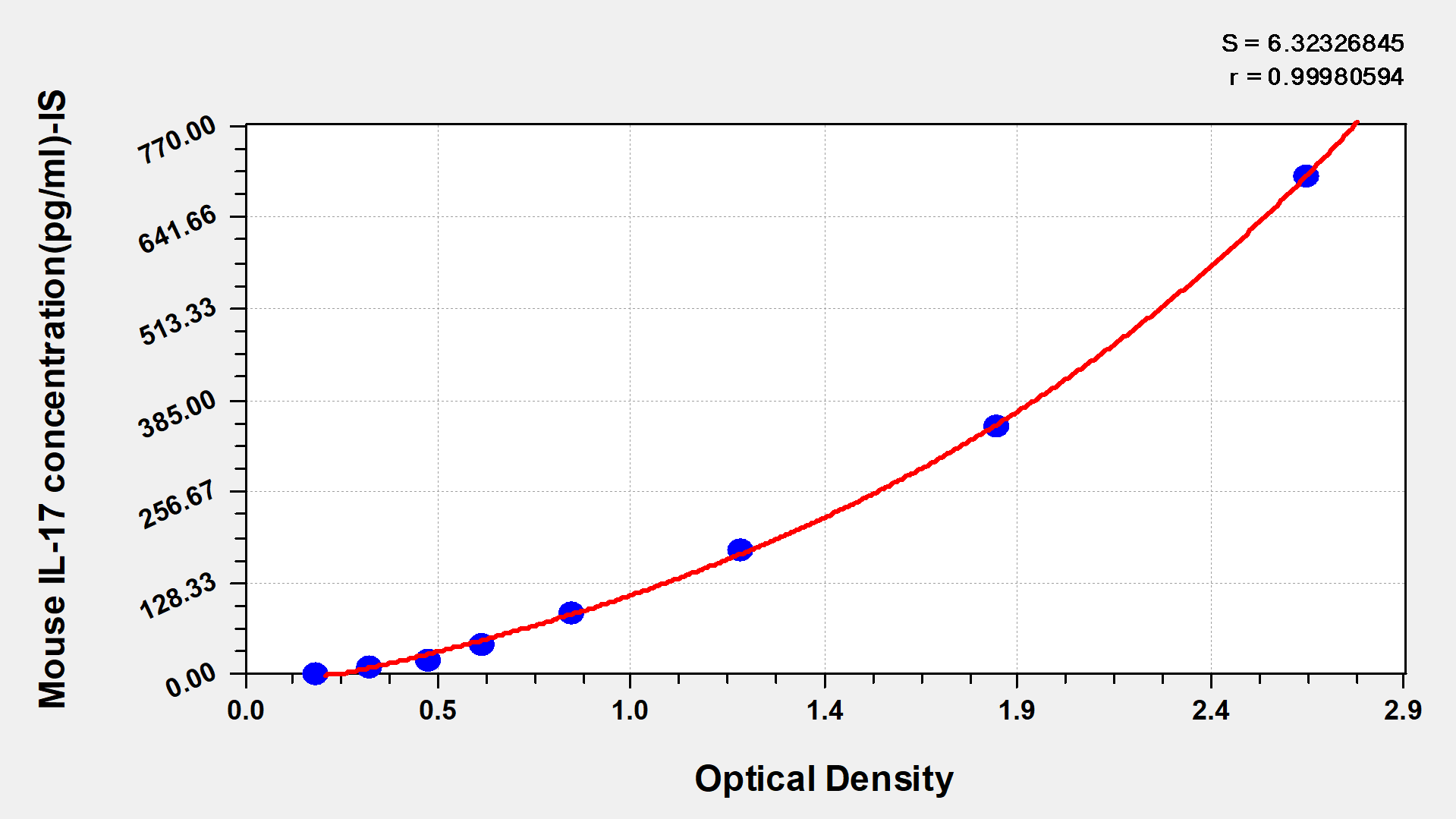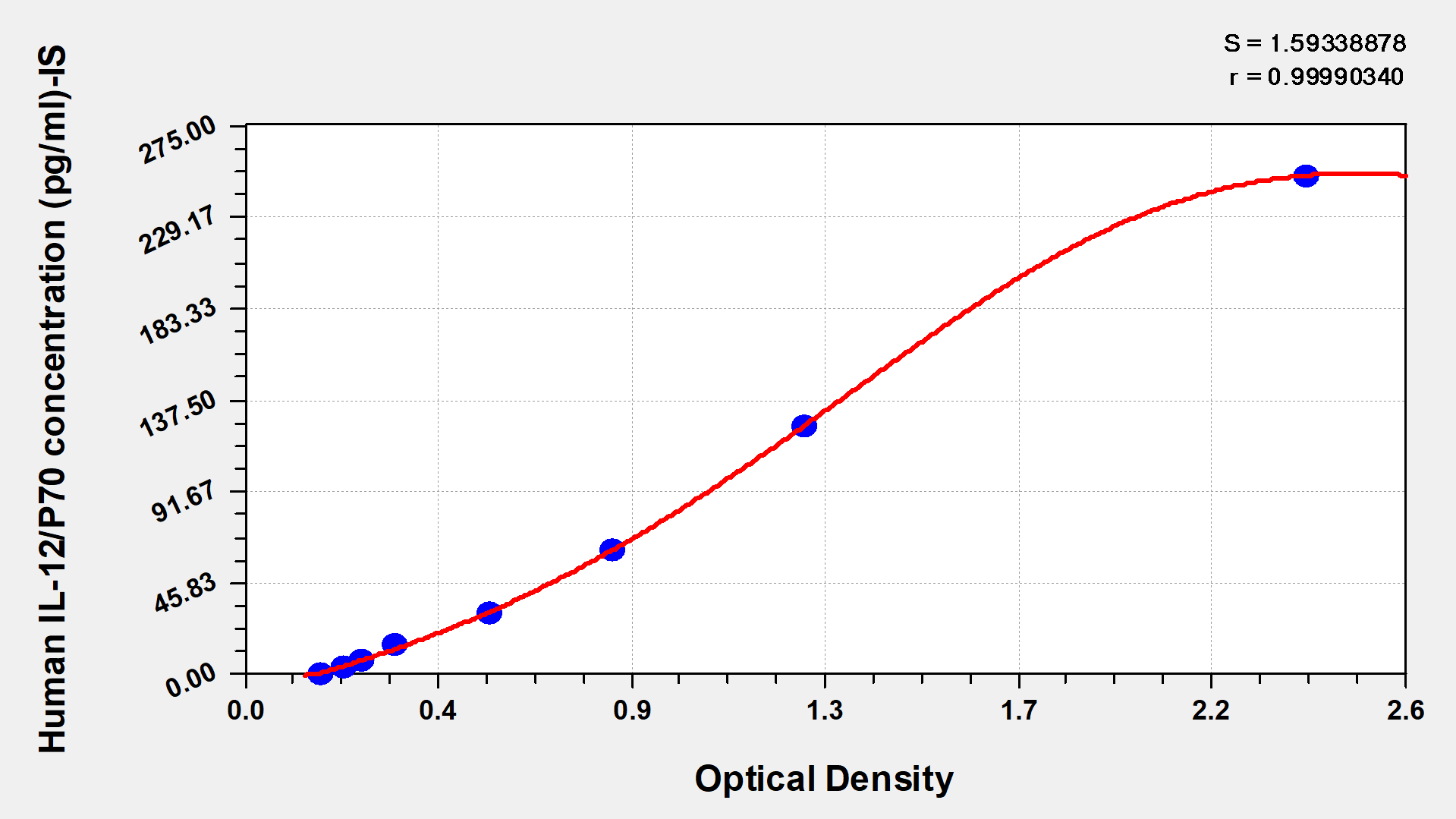Human Heat Shock Protein 70,HSP-70 ELISA Kit

產(chǎn)品詳情
-
產(chǎn)品描述:
人熱休克蛋白70(HSP-70)酶聯(lián)免疫試劑盒(CSB-E08297h)為雙抗夾心法ELISA試劑盒���,定量檢測血清��、血漿����、組織勻漿樣本中的HSPA1B含量��。HSPA1B 是重要的應(yīng)激蛋白,在細(xì)胞內(nèi)發(fā)揮分子伴侶作用��。它在細(xì)胞應(yīng)激反應(yīng)�����、蛋白質(zhì)折疊與轉(zhuǎn)運(yùn)等方面有重要功能����。研究發(fā)現(xiàn)其表達(dá)水平與多種疾病相關(guān),如腫瘤��,深入研究其作用機(jī)制���,有望為疾病診斷、治療及藥物研發(fā)提供新方向����。試劑盒檢測范圍為1.56 ng/mL-100 ng/mL,適用于體外科研場景中HSP - 70的動力學(xué)研究�,例如熱休克反應(yīng)機(jī)制探索、藥物處理或環(huán)境脅迫下的蛋白表達(dá)分析�����,亦可用于動物模型或細(xì)胞實驗中的生物標(biāo)志物定量評估�����。滿足實驗室對HSP - 70相關(guān)基礎(chǔ)研究、疾病機(jī)制解析及生物治療開發(fā)等多元化需求�����。本品僅用于科研�,不用于臨床診斷,產(chǎn)品具體參數(shù)及操作步驟詳見產(chǎn)品說明書��。
-
別名:
HSPA1B ELISA Kit; HSP72 ELISA Kit; Heat shock 70 kDa protein 1B ELISA Kit; Heat shock 70 kDa protein 2 ELISA Kit; HSP70-2 ELISA Kit; HSP70.2 ELISA Kit
-
縮寫:
-
Uniprot No.:
-
種屬:
Homo sapiens (Human)
-
樣本類型:
serum, plasma, tissue homogenates
-
檢測范圍:
1.56 ng/mL-100 ng/mL
-
靈敏度:
0.39 ng/mL
-
反應(yīng)時間:
1-5h
-
樣本體積:
50-100ul
-
檢測波長:
450 nm
-
研究領(lǐng)域:
Neuroscience
-
測定原理:
quantitative
-
測定方法:
Sandwich
-
精密度:
| Intra-assay Precision (Precision within an assay): CV%<8% | | | |
| Three samples of known concentration were tested twenty times on one plate to assess. | |
| Inter-assay Precision (Precision between assays): CV%<10% | | | |
| Three samples of known concentration were tested in twenty assays to assess. | | |
| | | | | | | |
-
線性度:
| To assess the linearity of the assay, samples were spiked with high concentrations of human HSP-70 in various matrices and diluted with the Sample Diluent to produce samples with values within the dynamic range of the assay. |
| | Sample | Serum(n=4) | |
| 1:1 | Average % | 96 | |
| Range % | 85-100 | |
| 1:2 | Average % | 87 | |
| Range % | 82-93 | |
| 1:4 | Average % | 98 | |
| Range % | 95-100 | |
| 1:8 | Average % | 92 | |
| Range % | 88-94 | |
-
回收率:
| The recovery of human HSP-70 spiked to levels throughout the range of the assay in various matrices was evaluated. Samples were diluted prior to assay as directed in the Sample Preparation section. |
|
| Sample Type | Average % Recovery | Range | |
| Serum (n=5) | 100 | 95-106 | |
| EDTA plasma (n=4) | 92 | 87-96 | |
| | | | | | | |
| | | | | | | |
-
標(biāo)準(zhǔn)曲線:
| These standard curves are provided for demonstration only. A standard curve should be generated for each set of samples assayed. |
|
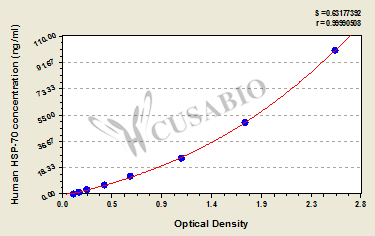 | ng/ml | OD1 | OD2 | Average | Corrected | | | 100 | 2.588 | 2.521 | 2.555 | 2.445 | | | 50 | 1.745 | 1.676 | 1.711 | 1.601 | | | 25 | 1.133 | 1.112 | 1.123 | 1.013 | | | 12.5 | 0.667 | 0.621 | 0.644 | 0.534 | | | 6.25 | 0.401 | 0.399 | 0.400 | 0.290 | | | 3.12 | 0.238 | 0.233 | 0.236 | 0.126 | | | 1.56 | 0.167 | 0.159 | 0.163 | 0.053 | | | 0 | 0.112 | 0.108 | 0.110 | | |
|
-
本試劑盒所含材料:
- A micro ELISA plate ---The 96-well plate has been pre-coated with an anti-human HSP70 antibody. This dismountable microplate can be divided into 12 x 8 strip plates.
- Two vials lyophilized standard ---Dilute a bottle of the standard at dilution series, read the OD values, and then draw a standard curve.
- One vial Biotin-labeled HSP70 antibody (100 x concentrate) (120 μl/bottle) ---Act as the detection antibody.
- One vial HRP-avidin (100 x concentrate) (120 μl/bottle) ---Bind to the detection antibody and react with the TMB substrate to make the solution chromogenic.
- One vial Biotin-antibodyDiluent (15 ml/bottle) ---Dilute the Biotin-antibody.
- One vial HRP-avidin Diluent (15 ml/bottle) ---Dilute the HRP-avidin solution.
- One vial Sample Diluent (50 ml/bottle)---Dilute the sample to an appropriate concentration.
- One vial Wash Buffer (25 x concentrate) (20 ml/bottle) ---Wash away unbound or free substances.
- One vial TMB Substrate (10 ml/bottle) ---Act as the chromogenic agent. TMB interacts with HRP, eliciting the solution turns blue.
- One vial Stop Solution (10 ml/bottle) ---Stop the color reaction. The solution color immediately turns from blue to yellow.
- Four Adhesive Strips (For 96 wells) --- Cover the microplate when incubation.
- An instruction manual
顯示更多
收起更多
-
本試劑盒不含材料:
- A microplate reader capable of measuring absorbance at 450 nm, with the correction wavelength set at 540 nm or 570 nm.
- An incubator can provide stable incubation conditions up to 37°C±5°C.
- Centrifuge
- Vortex
- Squirt bottle, manifold dispenser, or automated microplate washer
- Absorbent paper for blotting the microtiter plate
- 50-300ul multi-channel micropipette
- Pipette tips
- Single-channel micropipette with different ranges
- 100ml and 500ml graduated cylinders
- Deionized or distilled water
- Timer
- Test tubes for dilution
顯示更多
收起更多
-
數(shù)據(jù)處理:
-
貨期:
3-5 working days
引用文獻(xiàn)
-
Association between glaucoma damage and plasma concentration of heat shock protein 70
M Trenki?, TJ Stoimenov, J Ba?i?,Acta medica Medianae,2024
-
Behavioural thermoregulation and food availability drive fine‐scale seasonal habitat partitioning in limpets
SDS Virgin,functional ecology,2023
-
L-lysine supplementation improved glycemic control, decreased protein glycation, and insulin resistance in type 2 diabetic patients
H Mirmiranpour,International Journal of Diabetes in Developing Countries,2021
-
Study of serum interleukin 33 and heat shock protein 70 in allergic disease
Jassim A N.et al, International Journal,2015
-
A comparative proteomics analysis of peritoneal dialysate before and after the occurrence of peritonitis episode by mass spectrometry
Tyan YC et al ,Clin Chim Acta,2012
靶點詳情
-
功能:
Molecular chaperone implicated in a wide variety of cellular processes, including protection of the proteome from stress, folding and transport of newly synthesized polypeptides, activation of proteolysis of misfolded proteins and the formation and dissociation of protein complexes. Plays a pivotal role in the protein quality control system, ensuring the correct folding of proteins, the re-folding of misfolded proteins and controlling the targeting of proteins for subsequent degradation. This is achieved through cycles of ATP binding, ATP hydrolysis and ADP release, mediated by co-chaperones. The co-chaperones have been shown to not only regulate different steps of the ATPase cycle, but they also have an individual specificity such that one co-chaperone may promote folding of a substrate while another may promote degradation. The affinity for polypeptides is regulated by its nucleotide bound state. In the ATP-bound form, it has a low affinity for substrate proteins. However, upon hydrolysis of the ATP to ADP, it undergoes a conformational change that increases its affinity for substrate proteins. It goes through repeated cycles of ATP hydrolysis and nucleotide exchange, which permits cycles of substrate binding and release. The co-chaperones are of three types: J-domain co-chaperones such as HSP40s (stimulate ATPase hydrolysis by HSP70), the nucleotide exchange factors (NEF) such as BAG1/2/3 (facilitate conversion of HSP70 from the ADP-bound to the ATP-bound state thereby promoting substrate release), and the TPR domain chaperones such as HOPX and STUB1. Maintains protein homeostasis during cellular stress through two opposing mechanisms: protein refolding and degradation. Its acetylation/deacetylation state determines whether it functions in protein refolding or protein degradation by controlling the competitive binding of co-chaperones HOPX and STUB1. During the early stress response, the acetylated form binds to HOPX which assists in chaperone-mediated protein refolding, thereafter, it is deacetylated and binds to ubiquitin ligase STUB1 that promotes ubiquitin-mediated protein degradation. Regulates centrosome integrity during mitosis, and is required for the maintenance of a functional mitotic centrosome that supports the assembly of a bipolar mitotic spindle. Enhances STUB1-mediated SMAD3 ubiquitination and degradation and facilitates STUB1-mediated inhibition of TGF-beta signaling. Essential for STUB1-mediated ubiquitination and degradation of FOXP3 in regulatory T-cells (Treg) during inflammation.; (Microbial infection) In case of rotavirus A infection, serves as a post-attachment receptor for the virus to facilitate entry into the cell.
-
亞細(xì)胞定位:
Cytoplasm. Cytoplasm, cytoskeleton, microtubule organizing center, centrosome. Note=Localized in cytoplasmic mRNP granules containing untranslated mRNAs.
-
蛋白家族:
Heat shock protein 70 family
-
組織特異性:
HSPA1B is testis-specific.
-
數(shù)據(jù)庫鏈接:
Most popular with customers





